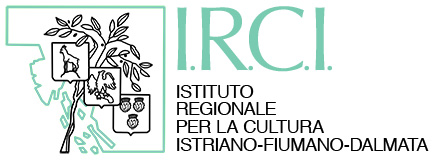

The
household objects of the Istrian, Fiuman, Dalmatian exiled people have been
abandoned in an eternal sleepless night for more than 50 years in the Porto
Vecchio of Trieste (the old harbour). The eye of the visitor is charmed by the
marvelous structure, but at the same time the scenario it sees is absurd,
somehow odd and wrong, because it fails to do justice to the tons of pieces of
furniture, decorations, work tools and all kind of objects, even coffins,
brought there by poor people as they were forced to leave their homes and lands
in Istria, Fiume and Dalmatia. Their fate was determined the moment the second
world war ended. Those who were born in 1945 (already in 1943 in Dalmatia) were
exiled children, exiled people for the rest of their lives, also today, if they
are still alive.
Those people
left much behind, their spirit, their memories, often intentionally blurred and
not shared with their children, who were not told what happened between the end
of the ‘40s and the ‘60s, a feeling of reluctance about being Istrian with
peaks of pride and, at the same time, the awareness of being Italian, confusion
about having to leave their homes and...2000 cubic metres of “household
objects”. After whirlwind adventures they have been located at the Magazzino 18
of Punto Franco Vecchio of Trieste. Still there, at the Porto Vecchio where
Expo 2008 took place and that should undergo a process of complete redeveloping
and modernization. Everyone has proposed their ideas for the re-development of
the old harbour, there has been much ado about it, but no one has ever taken
the exiled people’s heritage into consideration.
Our people
were victims of an exodus that hit everyone, the number of deaths is unknown, the persecution
kept secret. Even the “foibe” are sometimes denied. These mass slaughters of
the foibe (pits) happened when a right-wing party was in power and these tragic
events had been manipulated, eluded and shamelessly forgotten by the
governments of the “prima repubblica” (the Italian republican period from 1948
to 1994). Our people did not get justice, no “do ut des”, they cannot remember
or don’t want to. They were afraid and did not fight back before the exodus and
did not discuss the situation on a political level afterwards. They had little
money. This memory is kept alive not by our people’s claims, but by concessions
of Italian left parties, that rewrote history with the help of biased
historians and of infamous “commissions of Italian and Slovenian historians”
created to “agree on common historical interpretations”.
In the name
of an integrated Europe history can be agreed upon and then, be taught at
school. If our historians had leafed through history books used in Slovenian
schools, they would have - perhaps - noted the difference as compared to ours.
However, the
exodus is what it is: an episode to be removed. On one side we observe an
extraordinary effort to preserve every single moment of an historical phase
lasted 40 years on the shoulders of one man; on the other side we see facts
sunk into oblivion and silence.
What has
survived? Almost nothing, since the last generations who lived the exodus died.
We have only 2000 cubic metres of objects. A huge number of things capturing
the everyday life of a society that was suddenly destroyed. Its destruction
went on for a long time, it was washed away by a cyclic wave.
Few survivors
utterly disoriented and unwillingly displaced. Physically and spiritually
displaced. Human lives bearing inconceivable wounds, that did not spare even
those who decided to stay.